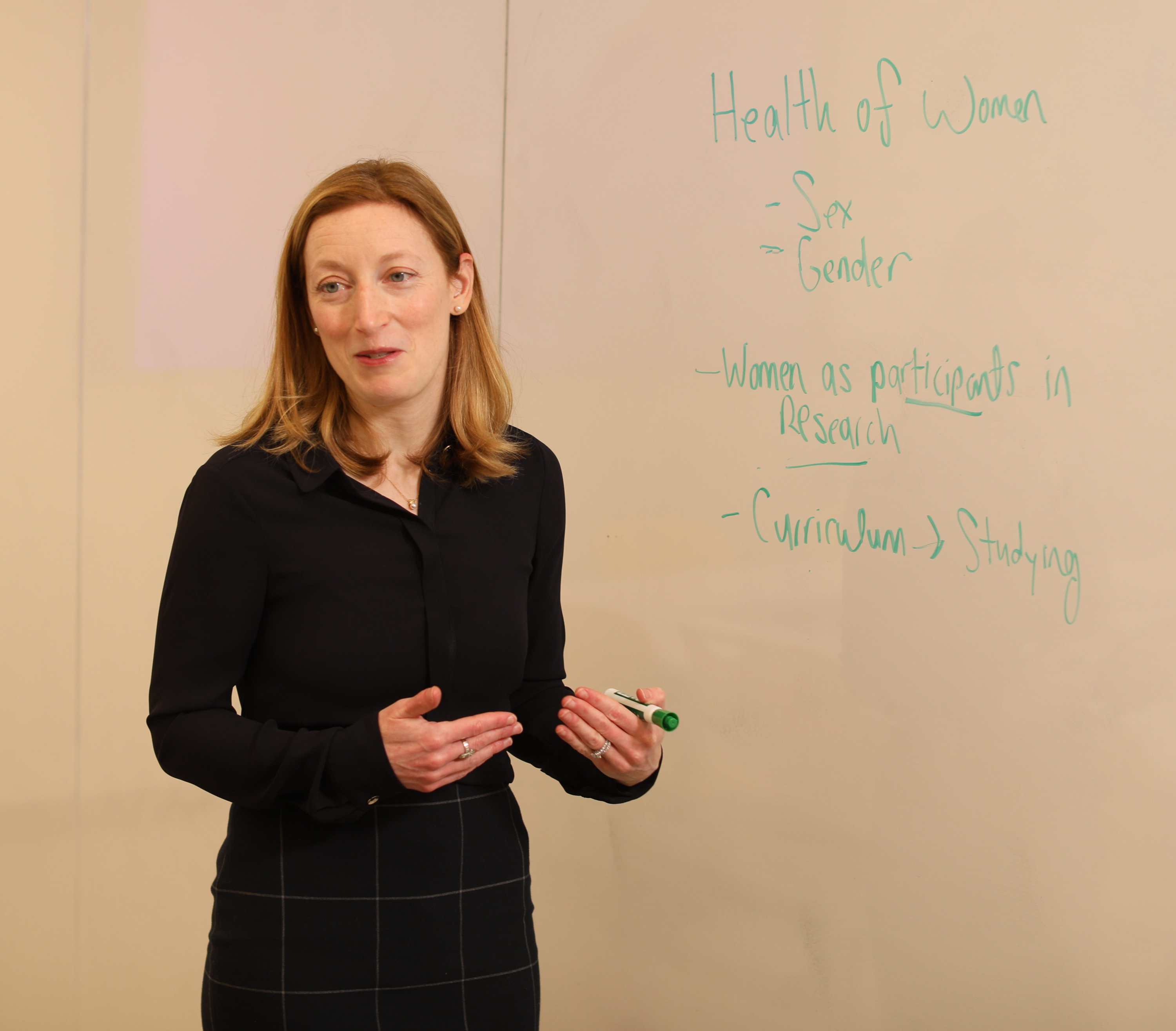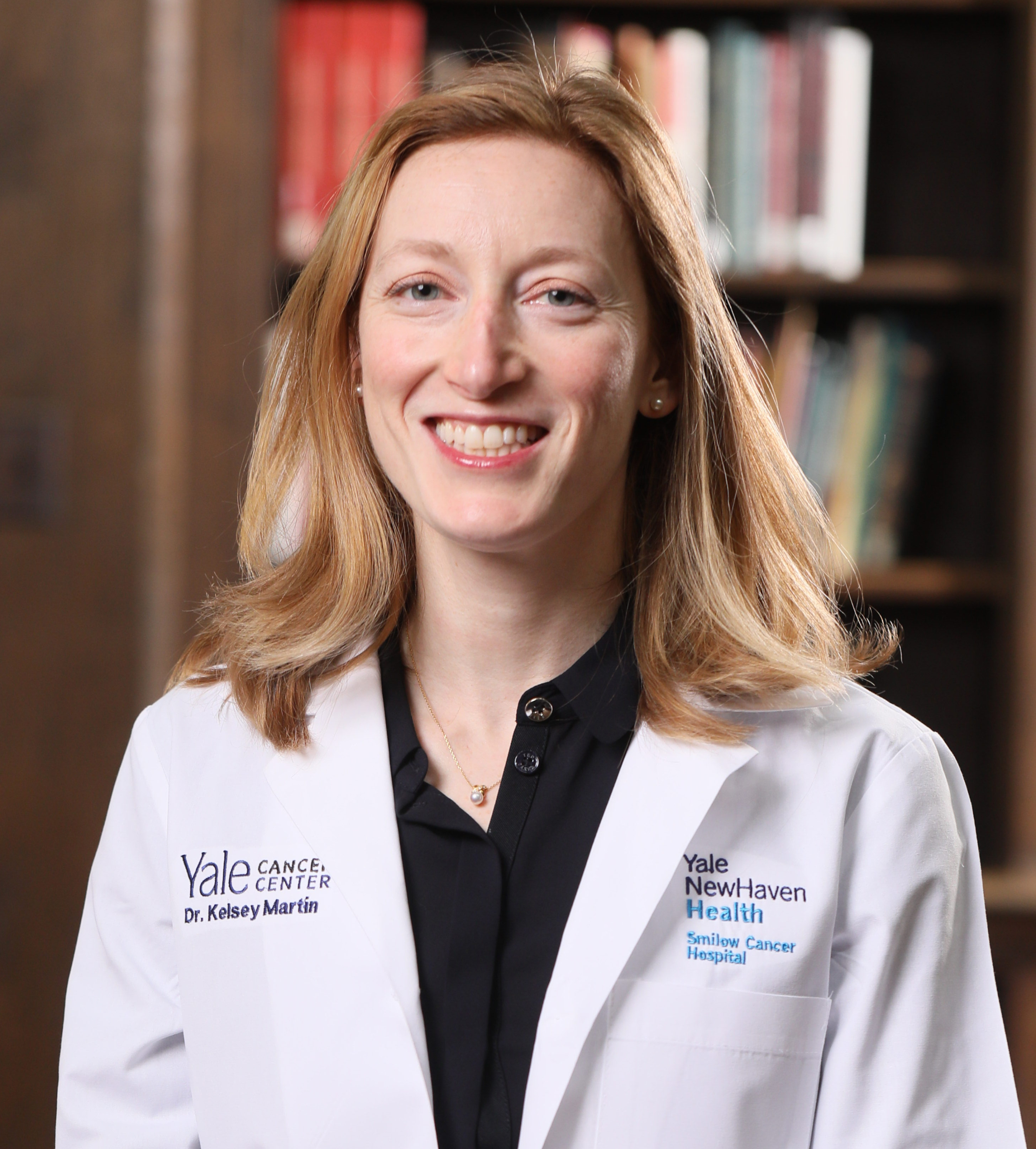When Kelsey Martin, MD, meets a new patient her first goal is to get to know the person. This means inquiring about an individual’s symptoms, medical history, and health behaviors. Also at the top of the list is their sex and gender because we now know these factors affect health and treatment outcomes.
“Medical research historically did not target the health of women beyond reproductive health and, as a consequence, data on women and the influence of sex and gender on health were not available to integrate into medical school teaching,” said Carolyn Mazure, PhD, the director of Women’s Health Research at Yale. “Now, science is catching up and we have data on women and on how sex and gender affect health and health care that medical practitioners need to know.”
Dr. Martin, as WHRY’s new Associate Director for Medical Education in Women’s Health, is focused on ensuring that Yale Medical School’s year and a half-long preclinical curriculum, which is designed to teach the biology underlying health and disease, integrates women’s health data and the role of sex and gender in health into medical education. “The goal is to incorporate key information into the curriculum that will prepare the clinicians and physician-scientists of the future,” Dr. Martin said.
The medical school journey for Yale students begins with eight major courses, all have major themes that characterize multiple topics areas. The content to be covered is extensive. Students explore the physiology and pathology found in every system of the body, and a partial list of topics range from cardiology, pulmonology, and endocrinology to genetics, infectious disease, and neuroscience. There is a lot to teach and a lot to learn in a relatively short amount of time. To facilitate the process of integrating data on women and on sex and gender differences, two faculty already teaching within a course become “champions” in women’s health – meaning they work with their teaching colleagues to help ensure that content on women’s health, and sex and gender differences, is woven into the lectures and lessons.
WHRY’s efforts to harmonize sex and gender differences within the already robust curriculum finds solidarity with likeminded efforts to include health data in relation to aging, LGBTQ+, disability, and other important topics. In fact, the concept of weaving new discoveries and data into core teaching is referred to as the “health equity thread.” It is one way the medical school and leaders like Jessica Illuzzi, MD, the Deputy Dean for Education, and Michael Schwartz, PhD, the Associate Dean for Curriculum, are ensuring inclusivity.
The commitment is also evident in the medical school’s newly created Health Equity Thread Advisory Group, for which both Drs. Martin and Mazure are invited members. The 15-person group, chaired by Beverley Sheares, MD, and Douglas Shenson, MD, has Yale faculty and students, and New Haven and Connecticut based community members who actively promote health and social justice. The goal of the group is to develop best practices for training physicians to respond to inequities that affect health and disease.
To put this into perspective, surveys of medical schools in the U.S. and Canada have found that coverage of topics in which sex-and-gender-based data exist was lacking. A study of Yale Medical School’s pre-clinical curriculum, led by WHRY, found that about a quarter of “teaching sessions raised the topic of sex or gender influences on physiology and pathophysiology or the experience of the patient in the health care environment.” (Thande et al, 2019)
“By integrating empirical data as these pertain to sex and gender into our preclinical medical school curriculum, we’ll be leading the development of really innovative education,” Dr. Martin explained. “We’re going to help our students be leaders in their health care fields, and researchers uncovering new data on women and on sex and gender to help improve everyone’s lives.

